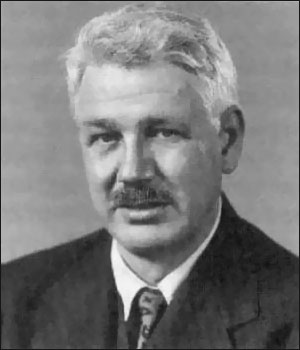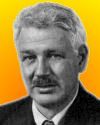
January 10, 2012
None other than the famed and scholarly anthropologist Carleton Coon investigated the case of the sighting of a large, bipedal, hairy cryptid in New Hampshire. Here is how he remembered what he discovered from the talk he gave at the British Columbia Sasquatch Symposium:

A year ago, as representative of the Peabody Museum of Harvard, I was sent to a town in New Hampshire just over the Massachusetts border to investigate a sighting.
A man who lived just below the border in Massachusetts had driven his pickup truck, which he had converted into a camper, to a wooded glade along a highway. He stopped there and went to sleep at the wheel, his two young sons likewise snoozing on bunks by a window.
At 11:00 p.m. the man awoke. Something was rocking his vehicle from side to side. An earthquake? He stepped out and was immediately grasped on the left shoulder by a seven foot tall creature covered with light brown or yellowish hair. Its right hand pushed the camper off his running board into the ground. It looked down on him, and stuck out its tongue. The man jumped free, the creature stepped back. The man drove as fast as he could up the highway, the creature following him.
“Step on it dad!” the boys cried, “He’s gaining on us!”
The creature apparently turned off the highway to the right, and then took another right into a so-called Lovers’ Lane, where we later found physical evidence of perhaps what the lane had been named for.
I went there twice. The terrain was a deep mat of fallen white pine needles. Several weeks after the encounter, the prints of what had been going on were still depressed an inch and a half to two inches below the surface of the needles. Fully clothed, I weigh about 168 to 170 pounds, and wear a size 12 shoes. My steppings and crawlings left no marks at all.
The forester of the local police department pointed out what might be called a fanny-print along the tracks at the edge of the lane, as wide as a very fat man’s but as sharp-edged as that of a man both lean and muscular. There were large footprints and small footprints, some pressed over the other, hand prints on edge, as by a karate blow, and what could have been elbow prints and knee prints. A professional photographer took pictures of these prints just after the “sighting,” on my first visit. Plaster casts taken on my third show the outlines, but little more.
Later on, one of the sighter’s sons saw the creature’s face peering into his bedroom below.
Two women also saw this blond Sasquatch, one when he crouched in front of a stone wall, another when he was walking across the highway. Both women refused to be interviewed, and let it be known that they had gone away.
The principal actor and both his sons passed polygraph tests to verify their consistent accounts. The father had never heard of the Sasquatch before, but one of his sons had seen something about it on television.
Several elements in this narrative had been recorded elsewhere, in other encounters, by persons who never heard of our New Hampshire actors and vice versa. Both these encounters took place at night. The animals rocked the vehicle. It touched its human occupant. Its touch was not aggressive, but apparently a clumsy attempt at interaction, what might have been called a pat of affection, or a way of saying: “I’m hungry!” or “I need a drink of water.”
After he had recovered from the first shock of his encounter, the principal actor was in a state of shock, perhaps resembling hypnosis. I know what this means. I was once almost equally pixilated by the unblinking gaze of a lion, although no human being has ever hypnotized me. The fact in the window syndrome is also on record elsewhere. So is the statement that the animal stank nauseously. “He smelled like rotten fish.” That theme-smell is found in many verifiable records of encounters, but not in all of them. After all, some people’s sense of smell is keener than others’ is.
Carleton Stevens Coon (23 Jun 1904 – 6 Jun 1981) was an American anthropologist who made notable contributions to cultural and physical anthropology and archaeology, with controversial studies of the origins and contemporary variations of human racial types. His studies ranged from prehistoric communities to modern tribal societies in the Middle East, Patagonia, and the hill country of India. He applied Darwinian adaptation to explain the physical characteristics of race in The Origin of Races (1962), based primarily on human fossil material. In his last book (1982), he was able to include biochemical data to suggest explanations for the physical variations in man. In the 1950’s he was a regular panelist on a TV show, in which experts identified museum artifacts.

* The Origin of Races (1962)
* The Story of Man (1954)
* The Races of Europe (1939)
* Caravan: the Story of the Middle East (1958)
* Races: A Study of the Problems of Race Formation in Man
* The Hunting Peoples
* Flesh of the Wild Ox (1932)
* The Riffian (1933)
* A North Africa Story: Story of an Anthropologist as OSS Agent (1980)
About Loren Coleman
Loren Coleman is one of the world’s leading cryptozoologists, some say “the” leading living cryptozoologist. Certainly, he is acknowledged as the current living American researcher and writer who has most popularized cryptozoology in the late 20th and early 21st centuries.
Starting his fieldwork and investigations in 1960, after traveling and trekking extensively in pursuit of cryptozoological mysteries, Coleman began writing to share his experiences in 1969. An honorary member of Ivan T. Sanderson’s Society for the Investigation of the Unexplained in the 1970s, Coleman has been bestowed with similar honorary memberships of the North Idaho College Cryptozoology Club in 1983, and in subsequent years, that of the British Columbia Scientific Cryptozoology Club, CryptoSafari International, and other international organizations. He was also a Life Member and Benefactor of the International Society of Cryptozoology (now-defunct).
Loren Coleman’s daily blog, as a member of the Cryptomundo Team, served as an ongoing avenue of communication for the ever-growing body of cryptozoo news from 2005 through 2013. He returned as an infrequent contributor beginning Halloween week of 2015.
Coleman is the founder in 2003, and current director of the International Cryptozoology Museum in Portland, Maine.
Filed under Cryptomundo Exclusive, CryptoZoo News, Election Cryptids